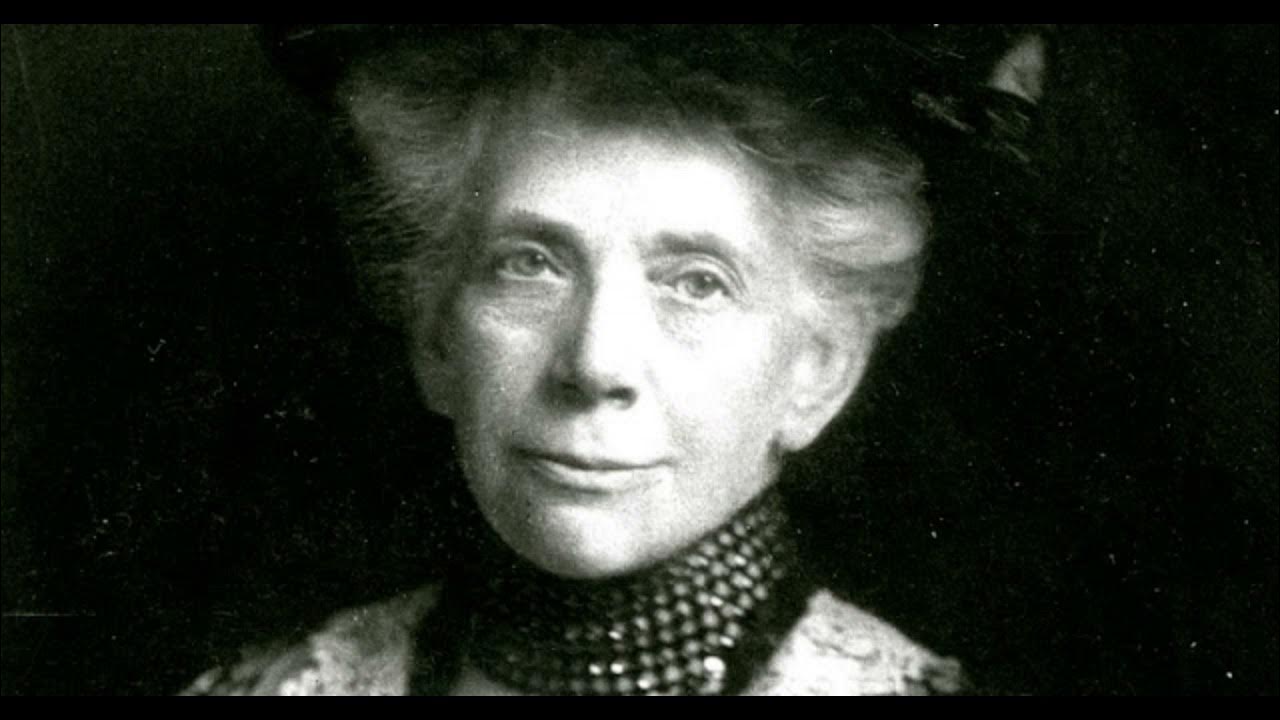First American woman to complete requirements for a doctoral degree in mathematics: Who is Christine Ladd-Franklin?
Christine Ladd-Franklin is among the forgotten mathematicians who made important contributions to mathematics, symbolic logic, philosophy, biology, and psychology with their works.

Christine Ladd-Franklin (1847–1930) was a mathematician, psychologist, and suffragist who fought to eliminate barriers to women's access to universities in the first half of the 20th century. She worked as a teacher of logic and mathematics, among other things, and developed a theory of color vision that later significantly influenced modern psychology.
In 1926, Johns Hopkins University awarded a doctorate in mathematics and logic to 78-year-old Christine Ladd-Franklin, who had worked primarily in psychology for decades. But 44 years ago, Ladd-Franklin, Ph., became the first American woman to complete the requirements for a doctoral degree in mathematics. However, there was a diploma requirement that Ladd-Franklin could not fulfill. This condition was to be a man.
Who Was Christine Ladd-Franklin?
Born in 1847, Christine Ladd-Franklin was actually involved in the women's struggle from the moment she was born. Her mother and aunts had radical ideas compared to the time they lived in. Her mother and one of her aunts took Christine to women's rights classes when she was young. All these lessons would affect her stance in the following years.
Christine Ladd-Franklin (December 1, 1847 – March 5, 1930) was an American psychologist, logician, and mathematician. Ladd-Franklin was included in the Who's Who in America during 1901-1902 and 1914-1915. Ladd-Franklin remained a member of both scientific societies until her death. She was also a prominent member of the women's rights movement. In 1948, Bertrand Russell wrote: "I once received a letter from an eminent logician, Mrs. Christine Ladd-Franklin, saying that she was a solipsist, and was surprised that there were no others. Coming from a logician and a solipsist, her surprise surprised me."
When Ladd-Franklin was 12, her mother died. Her grandmother, with whom she lived after her mother's death, did not want her to go to university. Ladd-Franklin wrote in her diary about the argument, “I must support myself as I cannot find a husband to support me. “I need training to do this,” she would write.
She subsequently enrolled at Vassar College. Christine Ladd-Franklin had a great motivation for research and science from the beginning. At Vassar College, she would also have the chance to meet the well-known American astronomer Maria Mitchell. (Vassar bases its purpose on the principle that women receive the same education at the same standards as those offered at men's colleges, and is the first college in America established for women.)
Christine Ladd-Franklin was particularly interested in physics but faced the challenges of pursuing a career as a researcher in that field, so she turned to mathematics. She later became interested in experimental research in psychology and physiology. She graduated in 1869 and taught science and mathematics for nine more years. Meanwhile, her articles began to be published in various magazines.
The John Hopkins Years
John Hopkins University opened in 1876 as a graduate institution for men. Ladd-Franklin applied to Johns Hopkins in 1878 under the name C Ladd. Her application was denied after the trustees learned she was a woman. But mathematician James Joseph Sylvester, who was familiar with Ladd-Franklin's work from her published papers and encouraged her to apply, managed to persuade them. However, her name was not initially included in the school's official records.
Thanks to her extraordinary success at Johns Hopkins, she was allowed to take other courses from professors such as Charles Pierce in her second year. Franklin, who was very impressed by logic, finished her thesis on logic in 1882. However, she did not receive a degree from Johns Hopkins. After her studies at Johns Hopkins, Ladd-Franklin continued her research. Meanwhile, she taught at Johns Hopkins and Columbia University without a formal faculty position or salary.
Christine Ladd-Franklin and Color Vision Theory
Meanwhile, they married mathematics teacher Fabian Franklin. After her marriage, Ladd-Franklin became interested in color theory and vision. She went to Germany with her husband in 1891-1892, where she developed her studies on the subject with George Elias Müller and Hermann von Helmholtz. She eventually came up with a theory of color vision based on evolution. She published the results of her studies in the American Journal of Psychology.
When they returned to the United States, Christine Ladd-Franklin asked for permission to teach at Johns Hopkins. Her request was rejected again. Years later, in 1904, John Hopkins allowed her to teach a course on logic and philosophy. In 1926, John Hopkins University awarded her a Ph.D. degree for her thesis completed in 1882.
One of her most important works, which brought together her research, was published in 1929, called Color and Color Theories. Christine Ladd-Franklin died a few years after receiving her degree in 1930.
